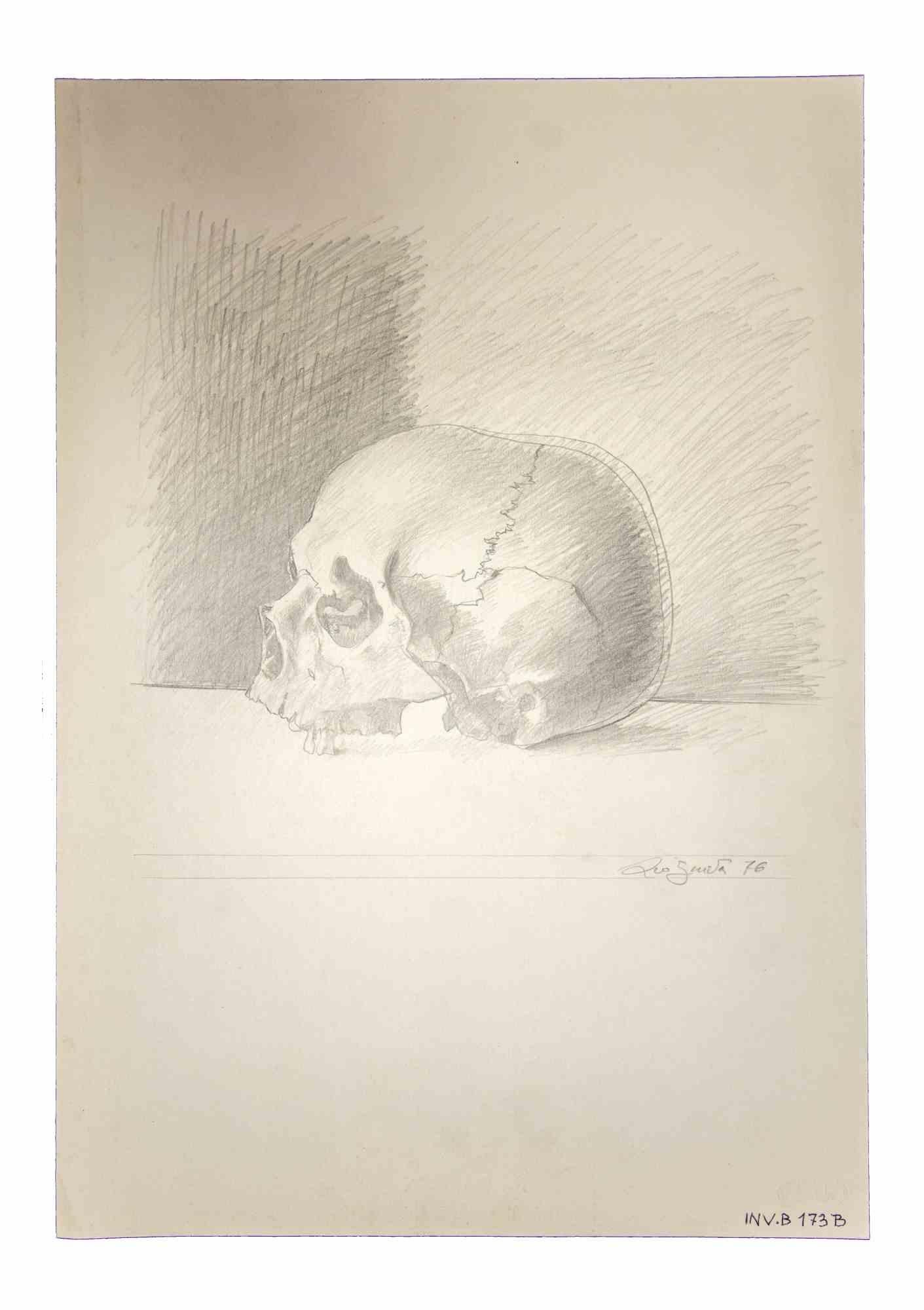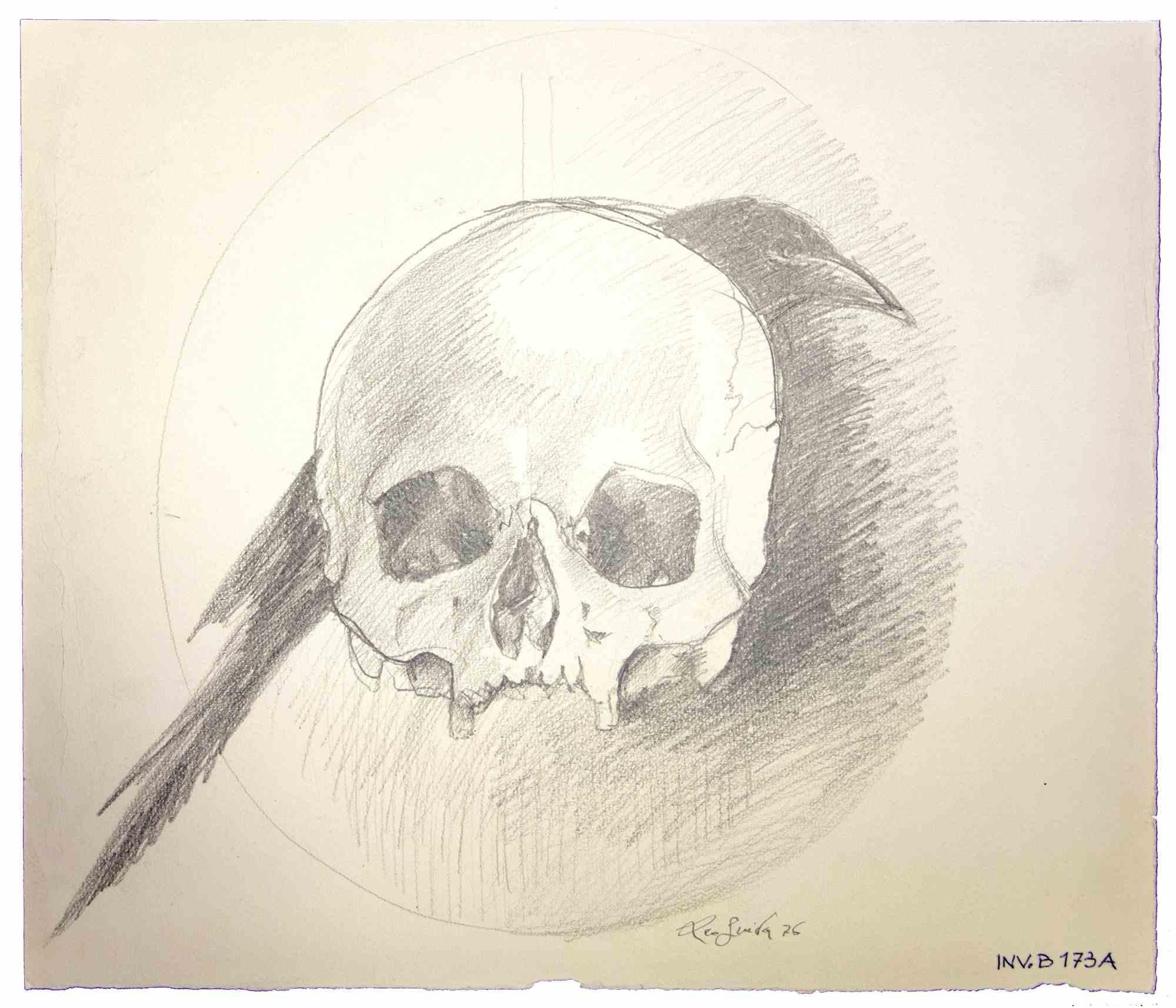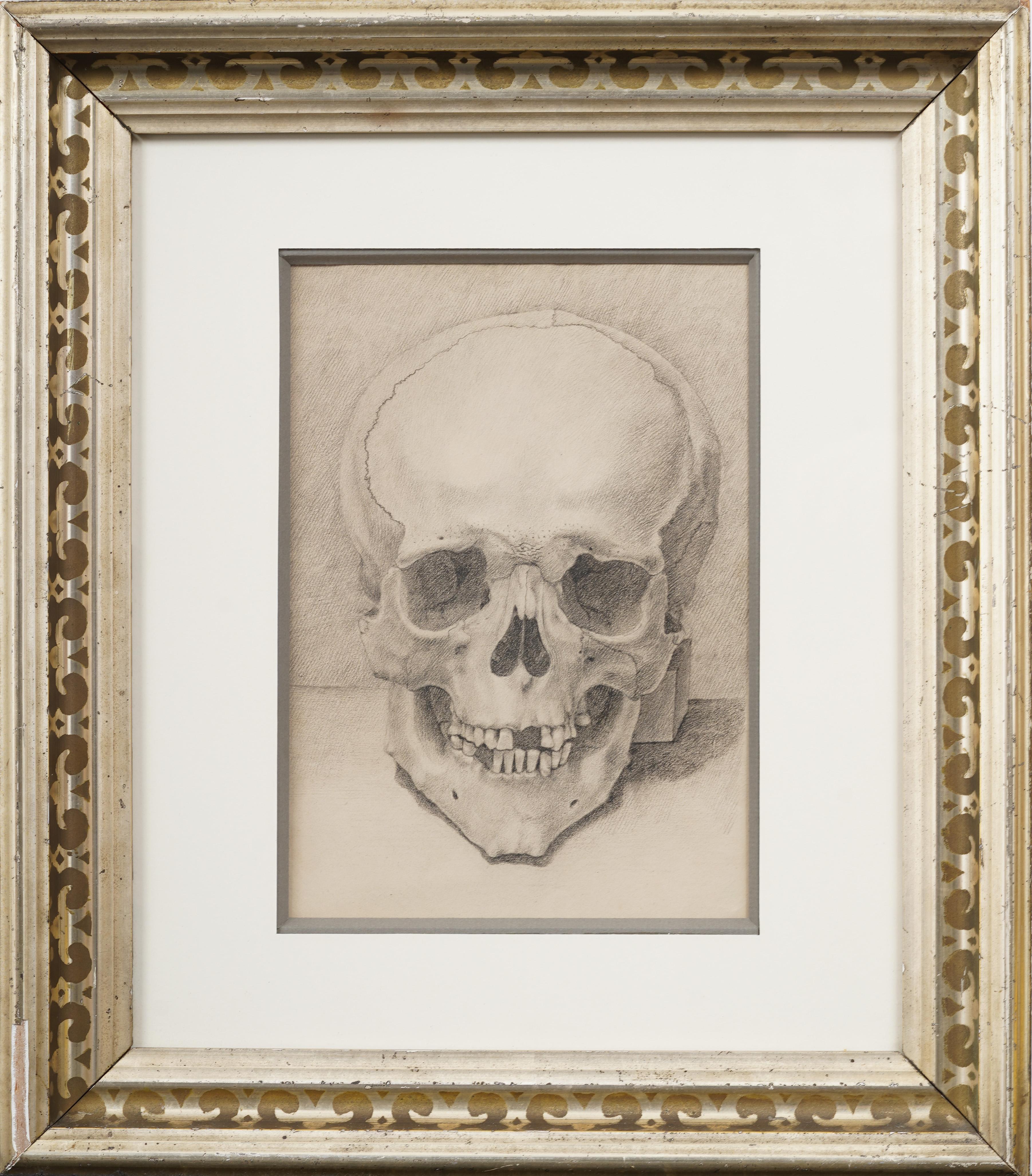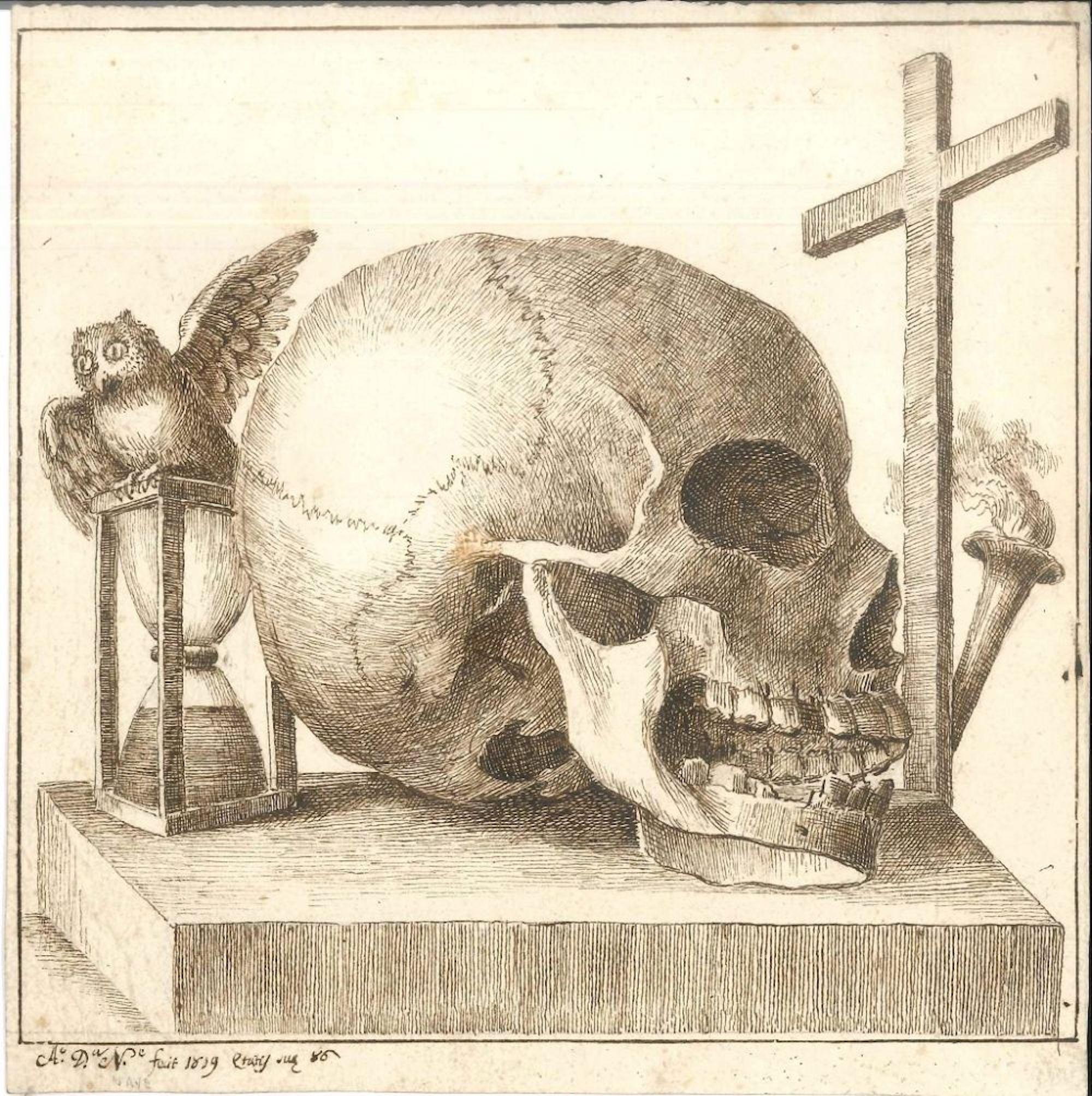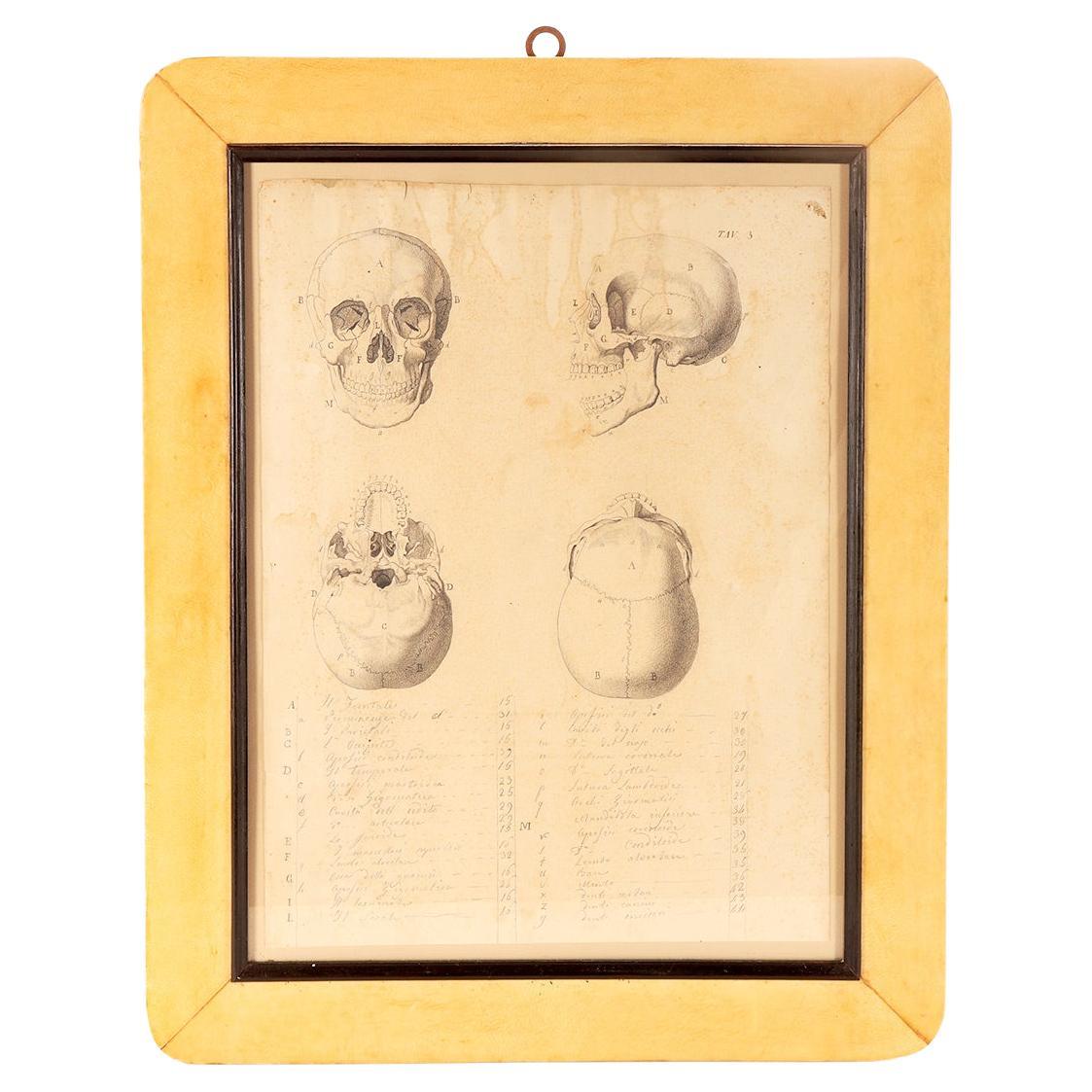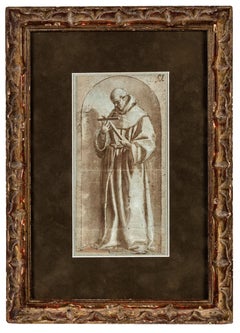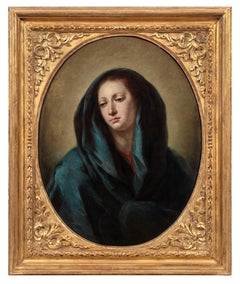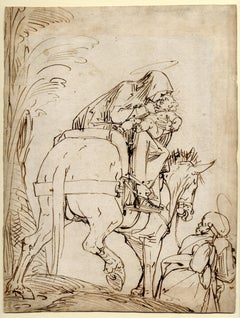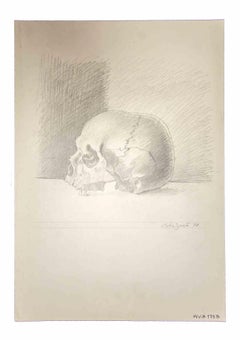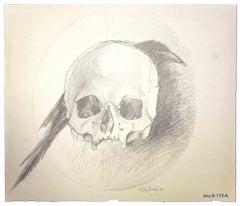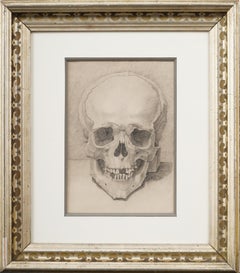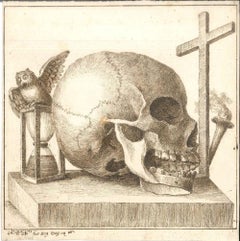Items Similar to Raphael’s Skull
Want more images or videos?
Request additional images or videos from the seller
1 of 3
Tomasso MinardiRaphael’s Skull1833
1833
$100,000
£76,265.40
€87,877.59
CA$142,847.43
A$157,044.50
CHF 81,178.74
MX$1,879,137.64
NOK 1,024,863.26
SEK 960,837.96
DKK 656,319
About the Item
Provenance:
Ettore Calzone Collection, Rome, by 1912.
Exhibited:
“Raffaello: L’Accademia di San Luca e il mito dell’Urbinate,” Accademia Nazionale di San Luca, Rome, 21 October 2020 – 31 January 2021, no. 25.
Literature:
Antonio Muñoz, “La Tomba di Raffaello nel Pantheon e la sua nuova sistemazione,” in Vita d’Arte, vol. 5, no. 53 (1912), pp. 172-173.
France Nerlich, “Raffaels heilige Reliquie Überlegungen zu einem kunsthistorischen Ereignis,” in Raffael als Paradigma. Rezeption, Imagination und Kult im 19. Jahrhundert, ed. G. Heiss, E. Agazzi, and E. Dècultot, Berlin, 2012, pp. 47-81, especially pp. 60-61, 389.
Anna Lisa Genovese, La tomba del divino Raffaello, Rome, 2015, pp. 103-105.
Stefania Ventra, in Raffaello: L’Accademia di San Luca e il mito dell’Urbinate, exh. cat., ed. Francesco Moschini, Valeria Rotili, and Stefania Ventra, Rome, 2020, cat. no. 25, pp. 149-153.
The recent celebratory exhibitions marking the 500th anniversary of Raphael’s death have brought renewed interest to an artist who has continuously captivated collectors, artists, and the public from his day forward. After his premature death, Raphael Sanzio was interred in the Pantheon in Rome at his request—making him the first artist to be accorded this honor. His epitaph hailed him as “the most eminent painter and rival of the ancients” and stated that “in his life great Mother Nature feared defeat and in his death she herself feared to die.” By the 19th century, Raphael’s legendary status had risen to new heights, and his art remained a paradigm for Italian painters and all artists visiting Italy. Raphael’s influence is particularly felt in the works of Tommaso Minardi, author of the present drawing, who first arrived in Rome in 1803 from his native Faenza. Although he was in close contact with the painters Felice Giani and Vincenzo Camuccini early in his career, Minardi eventually rejected Neoclassicism and became one of the leading proponents of Purismo—an aesthetic movement that mirrored the tenets of the Pre-Raphaelites in Britain and the Nazarenes in Germany, emulating the style of earlier Italian artists. Minardi was one of the premier religious painters of his day in Rome, and his stylistic debt to Raphael is evident in many of his works (Fig. 1). After several years as the Director of the Accademia di Belle Arti in Perugia, which nurtured his interest in the great Renaissance artist, in 1822 Minardi was made Professor of Drawing of the Accademia di San Luca through the support of Antonio Canova and Pope Pius VII.
Minardi’s great skill as a draughtsman is evident in this meticulous rendering of Raphael’s skull, executed shortly after the artist’s body was removed from his tomb in the Pantheon (otherwise known as the Basilica of Saint Mary and the Martyrs). On 14 September 1833, Raphael’s sarcophagus beneath the altar of the Madonna del Sasso was opened on the orders of Pope Gregory XVI in order to confirm that the artist was truly buried there. The disinterring of Raphael’s body had been promoted by the Congregazione dei Virtuosi al Pantheon, the papal art academy of the arts, and the event was attended by the leading Roman figures and painters of the day, including Minardi who was a member of the Congregazione. Minardi was the first artist to propose making drawings of the artist’s remains, however, this task was initially entrusted to Vincenzo Cammucini, whose finished drawing was widely circulated as a lithograph (Fig. 2). Subsequently, Minardi was invited by the leader of the Congregazione, Giuseppe De Fabris, to carry out a graphic survey of Raphael’s skull and jaw, resulting in the drawing presented here, as well as a drawing of the detached mandible and a reconstruction of Raphael’s face. Interestingly, Minardi’s fascination with Raphael’s skull appears to have predated the artist’s disinterment. In 1827, Antonio Gualdi painted Minardi holding a skull in his hand (Fig. 3). This is most likely the skull that was famously kept in a display case at the Accademia di San Luca, which had traditionally been thought to belong to Raphael until the discovery of his remains and was treated as a relic by the students of the Accademia, who on the day of the festivities of San Luca would touch the skull with their pencils.
Our sheet was likely originally intended for the archive of the Congregazione dei Virtuosi al Pantheon, but Minardi ultimately retained the drawing in his possession. It later re-emerged in the collection of Ettore Calzone in Rome in 1912.
- Creator:Tomasso Minardi (1787 - 1871, Italian)
- Creation Year:1833
- Dimensions:Height: 9.75 in (24.77 cm)Width: 14.13 in (35.9 cm)
- Medium:
- Movement & Style:
- Period:
- Condition:
- Gallery Location:New York, NY
- Reference Number:1stDibs: LU10215910662
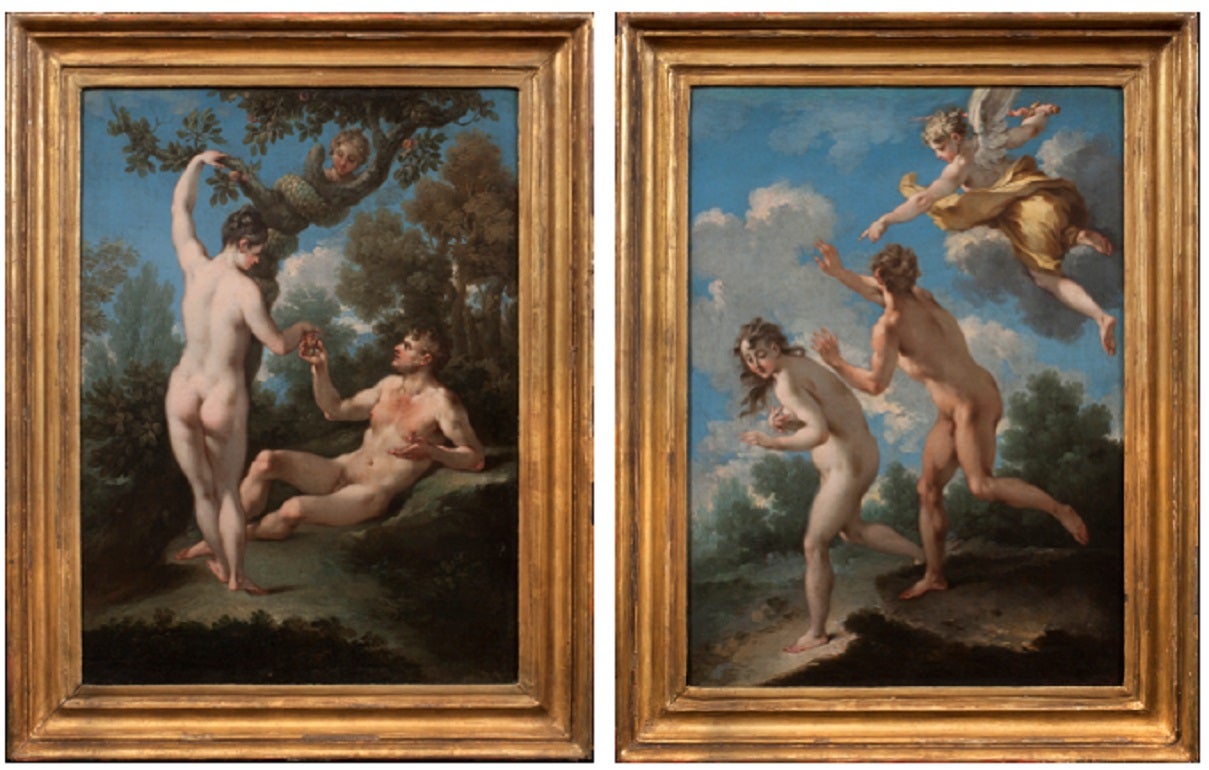
About the Seller
5.0
Recognized Seller
These prestigious sellers are industry leaders and represent the highest echelon for item quality and design.
Established in 1997
1stDibs seller since 2012
24 sales on 1stDibs
Typical response time: 11 hours
- ShippingRetrieving quote...Shipping from: New York, NY
- Return Policy
Authenticity Guarantee
In the unlikely event there’s an issue with an item’s authenticity, contact us within 1 year for a full refund. DetailsMoney-Back Guarantee
If your item is not as described, is damaged in transit, or does not arrive, contact us within 7 days for a full refund. Details24-Hour Cancellation
You have a 24-hour grace period in which to reconsider your purchase, with no questions asked.Vetted Professional Sellers
Our world-class sellers must adhere to strict standards for service and quality, maintaining the integrity of our listings.Price-Match Guarantee
If you find that a seller listed the same item for a lower price elsewhere, we’ll match it.Trusted Global Delivery
Our best-in-class carrier network provides specialized shipping options worldwide, including custom delivery.More From This Seller
View AllHead of a Classical Poet (Socrates?)
By Pier Francesco Mola
Located in New York, NY
Provenance:
Possibly Antonio Amici Moretti, Rome, 1690
Roy Clyde Gardner, Union, Mississippi, 1970s until 2004; by whom given to:
Mississippi Band of Choctaw Indians, 2004-2010
Lit...
Category
17th Century Baroque Paintings
Materials
Canvas, Oil
Study of a Franciscan Saint, probably San Diego de Alcalá
Located in New York, NY
Provenance: Ivan E. Phillips, Montreal and New York, until 2023.
The brothers Bartolomé Carducho and Vicente Carducho, both born and trained in Florence, settled in Spain where they made their careers. Vicente worked on numerous commissions for both the church and the Spanish court...
Category
17th Century Old Masters Drawings and Watercolor Paintings
Materials
Paper, Chalk, Ink, Pen
Head of the Virgin
Located in New York, NY
Provenance: Private Collection, Paraguay.
This unpublished Head of the Virgin is a new addition to the rich corpus of paintings by Giovanni Battista Tiepolo. While the artist freque...
Category
18th Century Old Masters Figurative Paintings
Materials
Oil, Canvas
The Flight into Egypt
Located in New York, NY
Inscribed: 3. una Madonna che va in Egitto, verso, and Madonna che va in Egitto, recto
Provenance:
Private Collection, UK, since 1999
This expressive and boldly executed drawing is the work of Luca...
Category
16th Century Old Masters Figurative Drawings and Watercolors
Materials
Chalk, Ink, Pen, Paper
Head of a Young African Man
Located in New York, NY
Provenance: Private Collection, Spain.
This intriguing and enigmatic sculpture depicts the head of a young African man emerging from a circular opening ...
Category
Early 1800s Figurative Sculptures
Materials
Terracotta
The 1564 Medici Danti Map of California
By Fra Egnazio Danti
Located in New York, NY
Florentine, Probably Seventeenth Century
Titled
L’ultime parti note nel Indie occidentali
Dated on the edge of the cartouche: “M.D. LXIII. M.AG” [1564…the month of August]
In the 1560s Cosimo I de’Medici, the powerful Duke of Florence, undertook a major renovation of the Palazzo Vecchio, the venerable palace that to this day dominates the city at the Piazza della Signoria. For the Sala della Guardaroba, literally the wardrobe room, but in fact the storeroom of the Duke’s most precious holdings, Cosimo conceived of a grand decorative project that was to reflect in one space the entire cosmos --both an indication of the Duke’s ambition and an allusion to his name. The plan, supervised by Giorgio Vasari, involved the construction of walnut cabinets to contain the Medici treasures, on the outside doors of which were to be placed large hand-painted maps specially commissioned to document and illustrate the current knowledge of the world. Portraits of famous men were to decorate the tops of the cabinets and two large globes –one representing the terrestrial world, the other celestial—were to descend from openings in the ceiling. The commission for the maps, inspired by Ptolemy’s Geographia, was given to the celebrated mathematician and cosmographer, Fra Egnazio Danti (Perugia 1536-1585 Alatri). Fifty-three maps were ultimately created. Thirty were conceived and executed by Danti between 1563 and 1575. The remaining twenty-three were completed by Stefano Bonsignori between 1576 and 1686. They remain in place in Florence in the room for which they were created.
The present work is an exact-size painted, drawn and inscribed copy of Danti’s map of California...
Category
17th Century Old Masters Drawings and Watercolor Paintings
Materials
Canvas, Paper, Ink, Watercolor, Gouache, Pen
You May Also Like
Skull - Drawing by Leo Guida - 1976
By Leo Guida
Located in Roma, IT
Skull is an original artwork realized in 1976 by the italian Contemporary artist Leo Guida (1992 - 2017).
Pencil drawing on ivory-colored paper.
Hand-signed and dated on the lo...
Category
1970s Contemporary Figurative Drawings and Watercolors
Materials
Pencil
Skull - Drawing by Leo Guida - 1976
By Leo Guida
Located in Roma, IT
Skull is an original artwork realized in 1976 by the italian Contemporary artist Leo Guida (1992 - 2017).
Pencil drawing on ivory-colored paper.
Hand-signed and dated on the l...
Category
1970s Contemporary Figurative Drawings and Watercolors
Materials
Pencil
Antique American or European Trompe L'oeil Realist Macabre Skull Framed Drawing
Located in Buffalo, NY
Antique American or European realist skeleton still life drawing. In excellent original condition. Handsomely framed in a silver leaf molding. Excellent condition, ready to hang ...
Category
1890s Realist Portrait Paintings
Materials
Charcoal, Archival Paper, Pencil
Skulls - Pair of Original Ink Drawings by Alessandro Dalla Nave - Early 1800
Located in Roma, IT
Skulls is a lot composed by two original drawings, Skull with hourglass and owl and Skull with Candle leaning on Book realized by Alessandro Dalla Nave.
Skull with hourglass and owl...
Category
Early 19th Century Modern Figurative Drawings and Watercolors
Materials
Ink
Vintage Boho Original Pencil Sketch of Skull
Located in West Palm Beach, FL
Add a bold artistic touch to your space with this Vintage Boho Original Pencil Sketch of Skull. This one-of-a-kind drawing captures intricate details with fine pencil strokes, blendi...
Category
Vintage 1940s American Bohemian Paintings
Materials
Glass, Wood, Paper
Anatomical drawing of four views of a skull, made in pencil and ink, Italy 1890.
Located in Milan, IT
A painting containing an ancient anatomical drawing in pencil and ink of four views of a skull, created for the creation of anatomical tables. The antique frame, made of fir wood wit...
Category
Antique Late 19th Century Italian Paintings
Materials
Iron
More Ways To Browse
Antique Mirror Aesthetic
Pope Pius
Antique Roman Figures
Antique Mirror Aesthetic
Pope Pius
Antique Roman Figures
Antique Mirror Aesthetic
Pope Pius
Antique Roman Figures
Vincent Brodeur
Vincent Caralto
Vincent Tailhardat
Vintage 1929 Hat
Vintage 1980S Skateboards
Vintage Art Supplies 1940s
Vintage Canadian Military Poster
Vintage Car Poster Rally
Vintage Chess Poster
